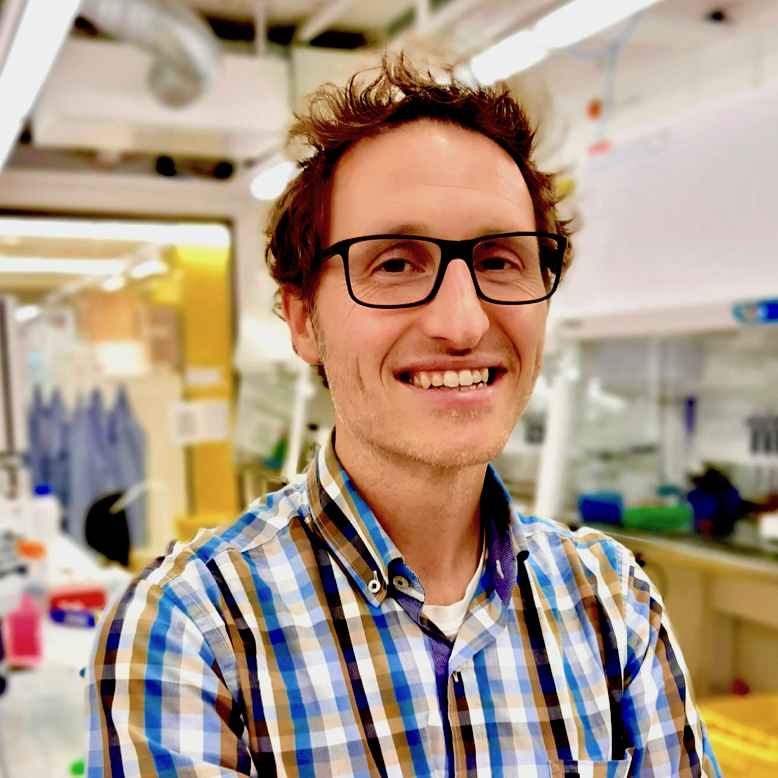Jordi Carreras-Puigvert joins the research group
24 Sep, 2020

We welcome Jordi Carreras-Puigvert who recently started as a Lecturer in our group. Jordi is a strategic recruitment from Karolinska Institutet, and he will establish his own research topic in the group working on cancer drug screening.
Explain a bit what you have done in your earlier research career!
I did my PhD in the Department of Toxicology of the Leiden Academic Centre for Drug Research, in Leiden, the Netherlands. I had two supervisors, Bob van de Water and Erik Danen, two different supervision styles, but extremely wise and inspirational. It was a very interesting project, I studied the DNA damage response (DDR) in mouse Embryonic Stem cells (mES). The final goal of the project was to identify new components of the DNA damage response. At that time there was a boom in siRNA technology, and the group wanted implement high-throughput screens, so I had the task to develop many of the methods that were later implemented, including robotics, high-throughput screening and high-content imaging. With all the technologies that we developed, we applied a systems biology approach to identify genes that confer resistance to a common chemotherapeutic drug, cisplatin, to mES, which was important for certain types of cancer. I then did a 2 year postdoc at the Leiden University Medical Center, in the group of Marcel Tijsterman, where I continued studying the DDR, but this time using c.elegans as a model organism. It was a lot of fun to work with this little flat worm. I set up a microscopy-based high-throughput screening methodology using fluorescent worms. I then moved to Sweden with a Marie Curie fellowship to study the NUDIX hydrolyses family of enzymes at the group of Thomas Helleday, at Karolinska Instituet. Here I continued making use of systems biology and high-throughput technologies to do the largest, so far, profile of this family of proteins. In the next step I joined the lab of Oscar Fernandez-Capetillo, whom was recruited at KI while maintaining his other lab at the CNIO, in Madrid. I was his first hiree, and my task was clear: set up a high-throughput screening lab from the ground up. Given my previous experience and expertise in high-throughput screening, and high-throughput technologies, this was a task in which I could apply all my knowledge. Within 4 months, our lab was fully equipped with all the molecular biology instrumentation that was needed, as well as all the more specialised equipment such as automated liquid handling robots, high throughput microscopy, and the necessary computer-based image and data analysis infrastructure. Additionally, I was also co-responsible for hiring the group members that would start in our group, which is currently formed by one research engineer, one technician, two PhD students (whom I supervise, and co-supervise), three postdocs and one project leader (formerly postdoc). I became Assistant Professor in 2017, and during this period I supervised the projects of the group, established collaborations, created PhenoTarget.se, a SciLifeLab research community programme formed by more than 30 research groups, facilities and industry, with common interests in disease models, phenotypic screening and target identification.
What are your main current research interests?
I’m hugely fond of high-throughput phenotypic screens, I have done these type of screens almost my whole scientific career, and I want to continue having fun with this technique. During the period that I co-lead the group with Oscar Fernandez-Capetillo, I learned a lot about drug discovery and drug development, and I want to try to expand on that. For instance, I want to investigate how common drugs affect our immune response and potentially response to cancer immuno therapy. I have many projects in mind, but they all share a common trait: I will be using high-throughput high-content imaging, boosted by automation and AI, taking advantage of the group’s expertise. I have been helping a bit to develop and implement cell painting at pharmb.io, and I want to further develop it for drug discovery to ultimately find and develop new drugs against, for example, sarcoma, and other disease models and types of cancer that I have in mind.
What do you hope to achieve in the Pharmaceutical Bioinformatics group?
I have a lot to learn here, and I want to develop my inner bioinformatician while implementing my ideas on disease models, molecular biology and phenotypic screening. I want to develop my own research, bringing ambitious projects that will make use of the expertise in the group, and bring them to the next level. I also want to disseminate our knowledge, so I want to create courses that bridge biology and automation, bringing robotics into the traditional wet lab environment, teach students to combine these two approaches to reach their goals, and to show them how fun it can be to develop such projects. I am confident that my stay at the Pharmaceutical Bioinformatics group will be my next solid academic step towards innovative and relevant scientific achievements in automation and drug discovery.
Do you have any hidden talent?
This summer we completely renovated the roof of a small country side cottage we have with the family, it didn’t turn out too bad, maybe that talent was hidden even for me. I have an unusual capability to remember people’s faces, names are another story. I also used to take apart Mac computers, tune them up and close them again, and surprisingly they all worked better than before. Apart from that I am a bit of an underdog at Svensk Klassiker sports, I’m not very good at them, but I am stubborn enough to try again and again. And finally, not many people know that, but I started motorbiking when I was 7 or 8 years old. This used to be very common where I come from, Catalunya. My parents were both fond of motorbikes, and I started first doing Trial, then Enduro, and I ended up with a highly customised Harley Davidson. Nowadays not more throttle twisting.

